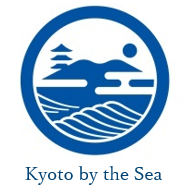Yosano, Kyotango, Miyazu: The Tango Region
Japan’s silk heritage
Kyoto by the Sea has a long history of silk production. 1300 years long and counting. Today, the Tango region (former ancient Tango Kingdom on the Sea of Japan) in the Kyoto by the Sea area is responsible for 70 percent of Japan’s high-quality kimono silk. From weavers to merchant houses that have been converted into museums, and even temples and shrines dedicated to the gods and protectors of silk.
The towns of Yosano and Kyotango are the main productions centers of silk in the region. Yosano in particular, has a historic street called Chirimen Street, where historic buildings have been preserved dating back to the end of the Edo period. Chirimen refers to a crepe (textured) silk with a reputation for being high-quality. Tango chirimen silk is of the highest quality and only produced in this area. Visitors to the area should be sure to check out the Former Bito Residence. This residence belonged to a wealthy merchant family involved in the silk trade, and it now serves as a cultural museum and base of operations for one of the area’s most-booked experiences: The Chirimen Real Kimono Experience, where visitors can try on authentic chirimen silk kimono and walk the historic streets. There is even an option to have a seasonal lunch using the family’s antique lacquerware.
In April 2017, "Chirimen Corridor: 300 Years Woven in Silk" was designated as a Japan Heritage site covering four municipalities in the Tango region. Established in the Edo Period, Tango chirimen silk is a supple and breathable fabric that is also superb for dyeing. Japan Heritage recognizes Tango chirimen's longtime support of Japanese kimono culture and the Tango region's history and culture.
Learn more about some of Japan’s most important silk areas
Chirimen Kaido
Chirimen Kaido, a historically important street in the Kaya region of former Tango Province (present-day northern Kyoto Prefecture), rose to prominence as a center of trade and distribution hub for the region’s chirimen silk crepe industry. This high-quality textile is a popular kimono fabric because of its soft texture and outstanding dyeability.
Zenjoji Temple
Zenjoji Temple preserves Saheiji Kinuya's first woven chirimen (textured crepe silk) fabric. Saheiji, a local resident, traveled to Nishijin in Kyoto to study weaving techniques and created chirimen weaving in 1720. He is known as one of the four founders of Tango chirimen silk.
address: 472 Mineyamacho Konishi, Kyōtango, Kyoto 627-0044
what3words address: ///tend.particularly.bookshelves
Former Bito Family Residence
what3words address (entrance): ///armfuls.takes.perforated
The Bito residence was built between 1863 and 1865, and four generations of the family lived here until 1980. Descended from samurai, the Bitos were a wealthy merchant family involved in silk wholesale in the Kaya region since the turn of the eighteenth century.
Former Mikami Residence
The Former Mikami Residence is a large mercantile home that was built in 1783 in Miyazu when it was still a castle town.
Former Kaya Town Hall
The Former Kaya Town Hall building stands at the northern entrance to Chirimen Kaido, a historically important merchant street that served as a hub for the greater Kaya region.
Kotohira Shrine
The prosperity of Tango chirimen (high-quality textured silk produced in this region) supported the financing of this shrine. It was built by the Kyogoku family, the lords of the Mineyama clan during feudal Japan. The shrine has a vast precinct with many shrines built on the grounds thanks to the success of chirimen, and there is a gorgeous wooden plaque from the Meiji era that depicts a grand festival procession. The festival still takes place today. Kishima Shrine (located at Kotohira Shrine), which enshrines the goddess of sericulture, was founded by thread merchants and silk cultivators who supplied raw silk (a raw material for chirimen). In dedication, rare stone guardian cats watch over this shrine, as cats exterminate the enemies of sericulture, mice. The shrine also serves as tribute to those whose work has helped preserve this traditional culture.
address: 1165-2 Izumi, Mineyama, Kyotango City, Kyoto Prefecture
what3words address: ///foolish.bath.debases
what3words address (cat guardian shrine): ///chinos.keychain.mutiny
Protective masks are a part of Japanese culture, but due to the 2020 COVID-19 pandemic, masks have become commonplace worldwide. This region produces chirimen silk masks, which are kind on the skin. Silk shares 18 of the 20 amino acids found in human skin, making the material extremely compatible and comfortable for us to wear. The silk naturally breathes, and is both warm in the winter, and cool in the summer. Try one.
Read more about the area’s silk in our Kyoto by the Sea Times article, 1300 Years of Tango Silk. (Link also on logo below)













